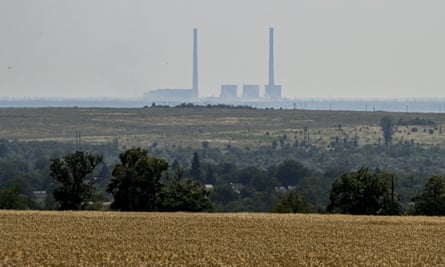Robert Oppenheimer, the American physicist who led the team that developed the world’s first nuclear weapons, quoted from ancient Hindu scriptures to illustrate his conflicting feelings about the forces his science unleashed: “Now I am become Death, the destroyer of worlds,” he said. In his later years, Oppenheimer longed for a future “without nation states armed for war, and above all, a world without war”.
Yet there’s another kind of loss that Oppenheimer recognised only too clearly in his readings of the Bhagavad Gita, the ancient text he turned to after the bombings of Hiroshima and Nagasaki in 1945. Humans now possess the power to destroy the world they live in.
The people of Ukraine have grown cruelly familiar with war and death, inflicted on them by a nation state with vastly superior resources: they will never forget the human loss they have suffered in fighting to save their homeland. But Ukraine is also facing a destruction of habitat and nature on a scale that will reverberate far beyond its borders. While it is almost impossible to measure, the breadth and depth of this damage must be understood.
Russia has taken deliberate aim at Ukraine’s environment: its rivers, forests and fields. Many of Ukraine’s natural reserves – its animal and sea life, water and impressive biodiversity – have been terribly damaged or polluted. Toxins leak from its damaged industries and infrastructure. Global food security is at risk. The world cannot afford to ignore this growing environmental threat.
The overwhelming threat to Ukraine’s environment was highlighted in June, with the extraordinary collapse of the huge Nova Kakhovka dam, which held back one of the biggest water reservoirs in Europe. This was no coincidental collapse: the dam was under Russian control when an explosion inside an internal passageway blew its concrete heart to pieces. This unleashed a catastrophic flood that wrecked over 40 towns and villages and one of the world’s most valuable agricultural regions. Tonnes of oil were spilled into the Dnipro River. An uncountable number of landmines were strewn into the river and the Black Sea, leading to toxic leakage.
Let Us Build Your Online Success!
We are the experts in creating visually stunning and functional websites. With reliable hosting and exceptional customer support, we bring your vision to life. Join hundreds of happy clients who trust us!
Get Started Now📞 Call/WhatsApp: +256 207 800 192

Today, we worry that an environmental disaster of even greater magnitude is looming at Ukraine’s Zaporizhzhia nuclear power plant. The plant was seized by Russia last year and remains under its control. Ukrainian intelligence has accused Russian forces of mining the plant, either to destroy it before they are expelled, or to stage an incident they would try to pin on Ukraine.
Rafael Grossi, director general of the International Atomic Energy Agency, visited Zaporizhzhia in June and described the situation as “extremely volatile”. Playing with explosives at a nuclear power plant risks environmental doom – for Ukraine and for all of Europe. Nuclear contamination does not stop at borders.
Russia will face justice. Both the international criminal court and Ukraine’s prosecutor general are investigating these acts as war crimes. But under both Ukrainian and Russian law, some of these crimes qualify as ecocide – an apt term for these terrible times: “the mass destruction of flora and fauna, poisoning of air or water resources, and any other actions that may cause environmental disaster,” as defined in Ukrainian law.
One day the war will end, and environmental safety is one of the key priorities to construct a just and lasting peace in Ukraine, as set out in President Zelenskiy’s peace plan. The president’s 10-point strategy placed emphasis on the protection of the natural environment. He has appointed a group, including senior Ukrainian officials and prominent international personalities, to push both Ukraine and the international community to be specific about how that can happen. Indeed, national security advisers of key global players discussed the path to peace in Jeddah, Saudi Arabia, earlier this month.
The reconstruction of Ukraine and its industries should be guided by green, net-zero objectives. Environmental reconstruction goals will need strong support from the international community. But urgent action is needed now. Measures to prevent further environmental catastrophe or mitigate damage should be prioritised – even during war.
The people of Ukraine have become grimly accustomed to war, death, and destruction – but we must do all that is possible to prevent further environmental disaster, which may later have unpredictable consequences for the region, and the world.
“It is perfectly obvious that the whole world is going to hell,” Oppenheimer declared at the height of the cold war, but here in Kyiv, we have not given up hope. The world’s best chance of avoiding hell depends on the rest of us trying to do something to prevent it.
-
Andriy Yermak is head of the Office of the President of Ukraine; Margot Wallström is a former foreign minister of Sweden. Together they co-chair the International Working Group on the Environmental Consequences of War
-
Do you have an opinion on the issues raised in this article? If you would like to submit a response of up to 300 words by email to be considered for publication in our letters section, please click here.
